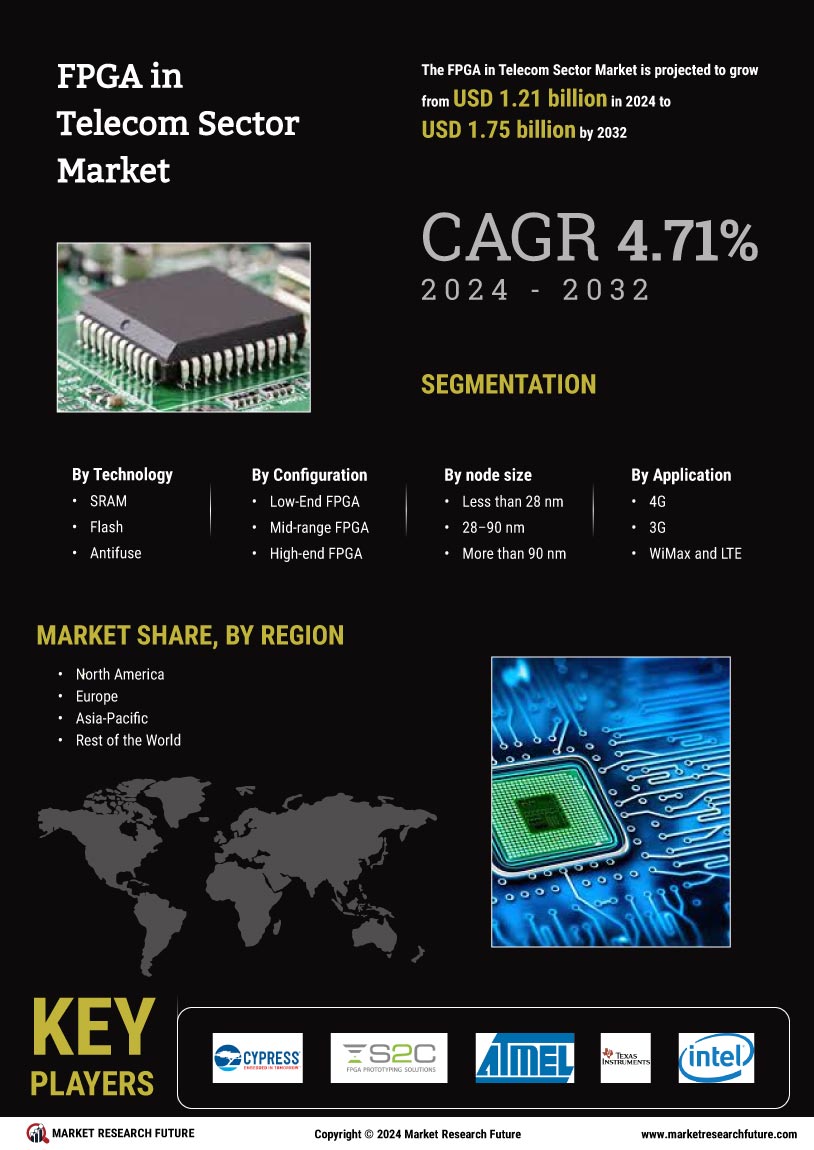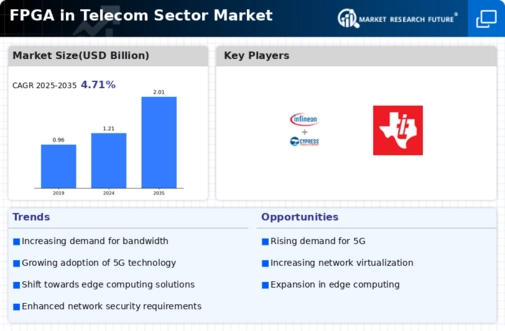Leading market players are investing heavily in research and development in order to expand their product lines, which will help the FPGA in Telecom Sector market, grow even more. Market participants are also undertaking a variety of strategic activities to expand their footprint, with important market developments including new product launches, contractual agreements, mergers and acquisitions, higher investments, and collaboration with other organizations. To expand and survive in a more competitive and rising market climate, FPGA in Telecom Sector industry must offer cost-effective items.
Manufacturing locally to minimize operational costs is one of the key business tactics used by manufacturers in the FPGA in Telecom Sector industry to benefit clients and increase the market sector. In recent years, the FPGA in Telecom Sector industry has offered some of the most significant advantages to medicine. Major players in the FPGA in Telecom Sector market, including Cypress Semiconductor and Achromic Semiconductor Corporation (US), S2C Inc. (US), Atmel Corporations (US),Texas Instruments (US) Intel Corporations (US) and others, are attempting to increase market demand by investing in research and development operations.
Cypress Semiconductor, a US-based semiconductor company, has made significant contributions to the FPGA market in the telecom sector. A variety of programmable system-on-chip (PSoC) solutions are available from Cypress that combine FPGA fabric with microcontrollers and other parts. Their solutions for telecom applications, such as baseband processing, wireless infrastructure, and network hardware, are adaptable and effective. The FPGAs made by Cypress Semiconductor are renowned for their excellent performance capabilities, low power requirements, and simplicity of integration.
Cypress has made a name for itself as a trustworthy supplier of FPGA solutions for the telecom industry thanks to their significant experience in the semiconductor industry. Another company competing in the FPGA market that focuses on telecom applications is Achromic Semiconductor Corporation, which is likewise situated in the US. The design and development of FPGA solutions specifically suited for telecom infrastructure, including 4G and 5G networks, is a specialty of Achromic Semiconductor. In the telecom industry, high-speed data processing, low latency, and sophisticated signal processing are demanding requirements that their FPGAs are made to satisfy.
Texas Instruments (TI), a renowned US-based semiconductor company, has a significant presence in the FPGA market within the telecom sector. FPGAs are just one of the many programmable logic products that TI provides to meet the stringent demands of telecom applications. Their FPGAs are made to take care of the requirements for flexible telecom infrastructure, low latency, and high-speed data processing. The advanced features found in TI's FPGAs, such as embedded processors, high-speed transceivers, and DSP blocks, allow for effective protocol handling and signal processing.
Base stations, wireless access points, routers, switches, and other telecom equipment all frequently use these solutions. The FPGA products offered by TI strike a compromise between usability, power efficiency, and performance, making them appropriate for a range of telecom applications. Texas Instruments continues to be a dependable supplier of FPGA solutions that support the development and effectiveness of telecom networks ly because to their significant knowledge and presence.













Leave a Comment